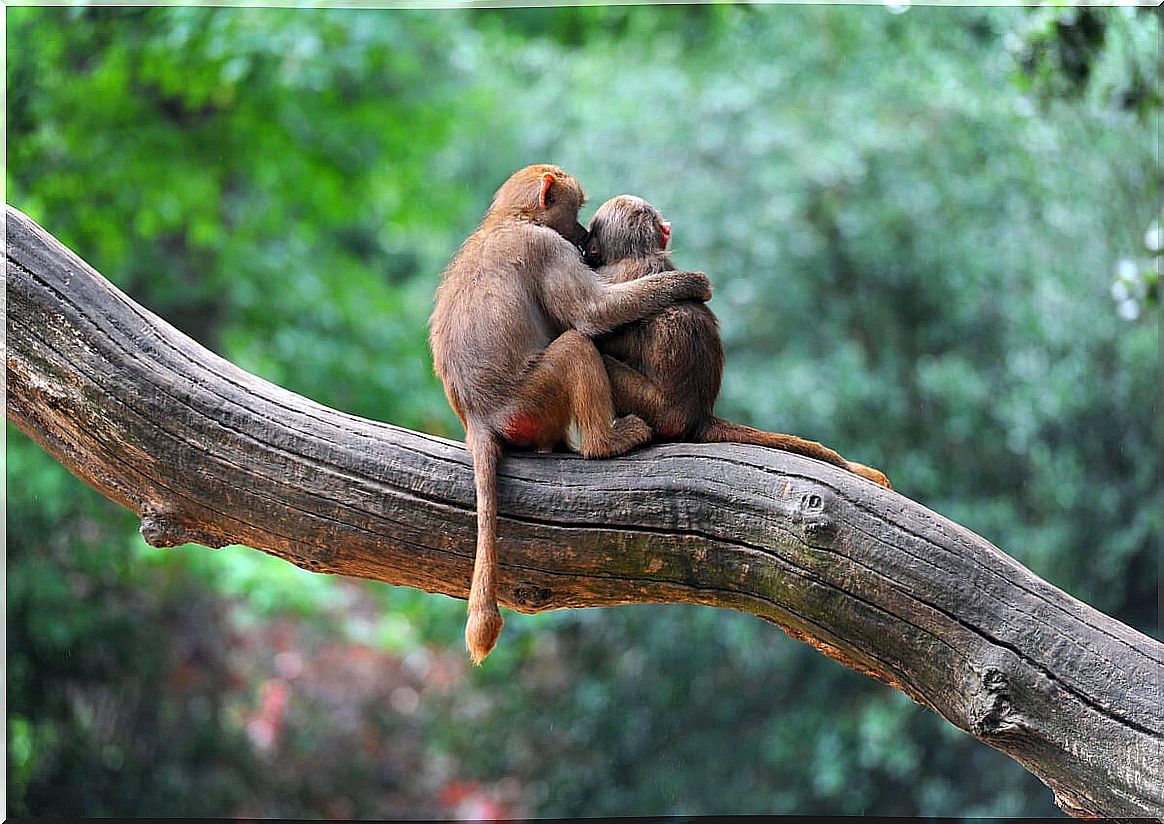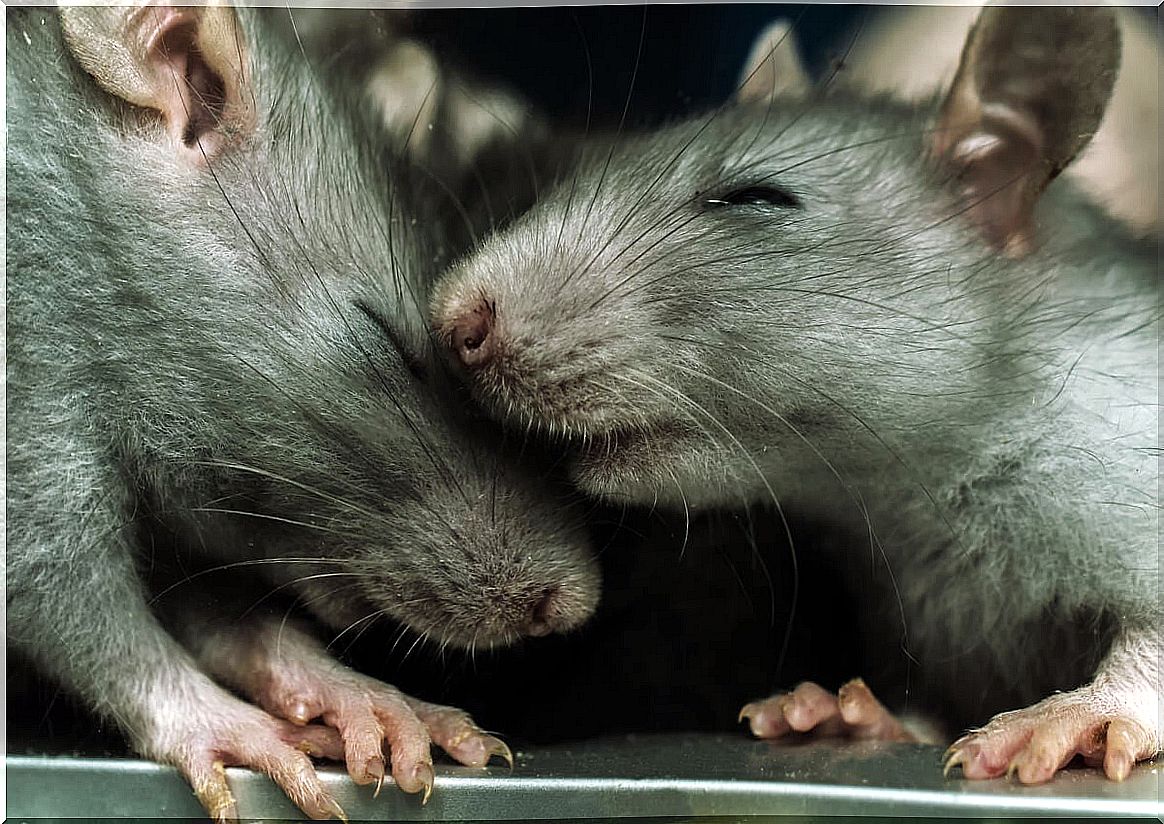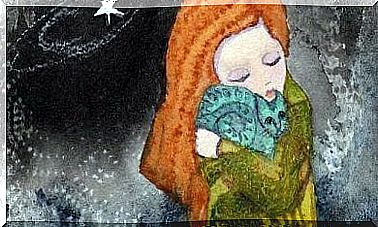Is There Empathy In Animals?

There are many notes and videos that circulate on the Internet about the existence of an apparent empathy in animals. The footage includes images of dogs helping cats, elephants caring for monkeys and countless similar cases. Without a doubt, all those images and data move us. However, are they really a manifestation of empathy?
Remember that empathy is the ability to perceive, infer and share the feelings and emotions of the other. This supposes at the same time the recognition of that other as a being similar to oneself, that is, with a subjective world as valid as ours.
As you can see, it is a complex ability. For this reason, it has traditionally been believed that there is no empathy in animals, but behaviors based on the individual and collective survival instinct. However, in recent years this premise has been questioned. Perhaps animals other than man have a more sophisticated behavior than is generally believed.
Empathy in animals
One of the most amazing videos about empathy in animals was recorded in 2014, in Kanpur, North India. In it you see a group of monkeys. One of them had received an electric shock on high-tension cables and fell unconscious to the ground, right in the middle of the train track.
The images show how another monkey tries to make him react by various means, but also worries about getting him off the train track. It takes a long time to do this, and you have to try several times before it is successful. Could this be said to be a survival behavior or are there signs of empathy in animals here?
Like this there are many other similar records and the most striking thing is that many times these acts occur between animals of different species. In fact, among specimens that are often considered “natural enemies”. Does this mean that there is empathy in animals?
The first investigations
The psychologist Russell Church wondered if there was empathy in animals a long time ago: back in 1959. To answer, he carried out a study with very intelligent animals: rats. He devised a complex experiment that would ultimately turn out to provide very interesting data.
He placed a group of rats in a controlled space. At one point there was a lever. If a rat oppressed it, food would come out there. However, at the same time the rat at the other end received an electric shock. In this way, the animals were left with a dilemma: by satisfying their own desire, they hurt other members of their species.
After understanding the mechanism, the rats stopped pressing the lever. In other words, they gave up food in order not to generate the electric shock. They did it even with specimens they did not know. What did this mean? The conclusions were not precise. It could not be established whether they abandoned the behavior for fear that they themselves would be the object of a shock, or to avoid suffering for others.

Revealing experiments
A study published in the journal Science in 2011, led by Inbal Ben-Ami Bartal, a professor in the department of Psychology at the University of Chicago, seems to prove that empathy in animals does exist. This research was also done with rats.
First, a rat was placed in a narrow cage, to which, obviously, it reacted with discomfort and anguish. He was then removed from there and forced to witness another rat being put in the same condition. In this case, the reaction was similar: there was concern and anguish for the specimen that was locked up.
The same was done over and over again. Soon, the rats learned to open the door of the container. They did not keep that knowledge to themselves, but from then on they helped their companions out of the cage. It is evident that they experienced the distress of others, as if it were their own.
The hypothesis that empathy does exist in animals is gaining more and more force. In fact, it seems to be one of the most universal behaviors, at least among mammals. The subject is still under investigation, but everything points to the fact that many animals do, at least in a primitive way, have the ability to put themselves in the place of the other.









